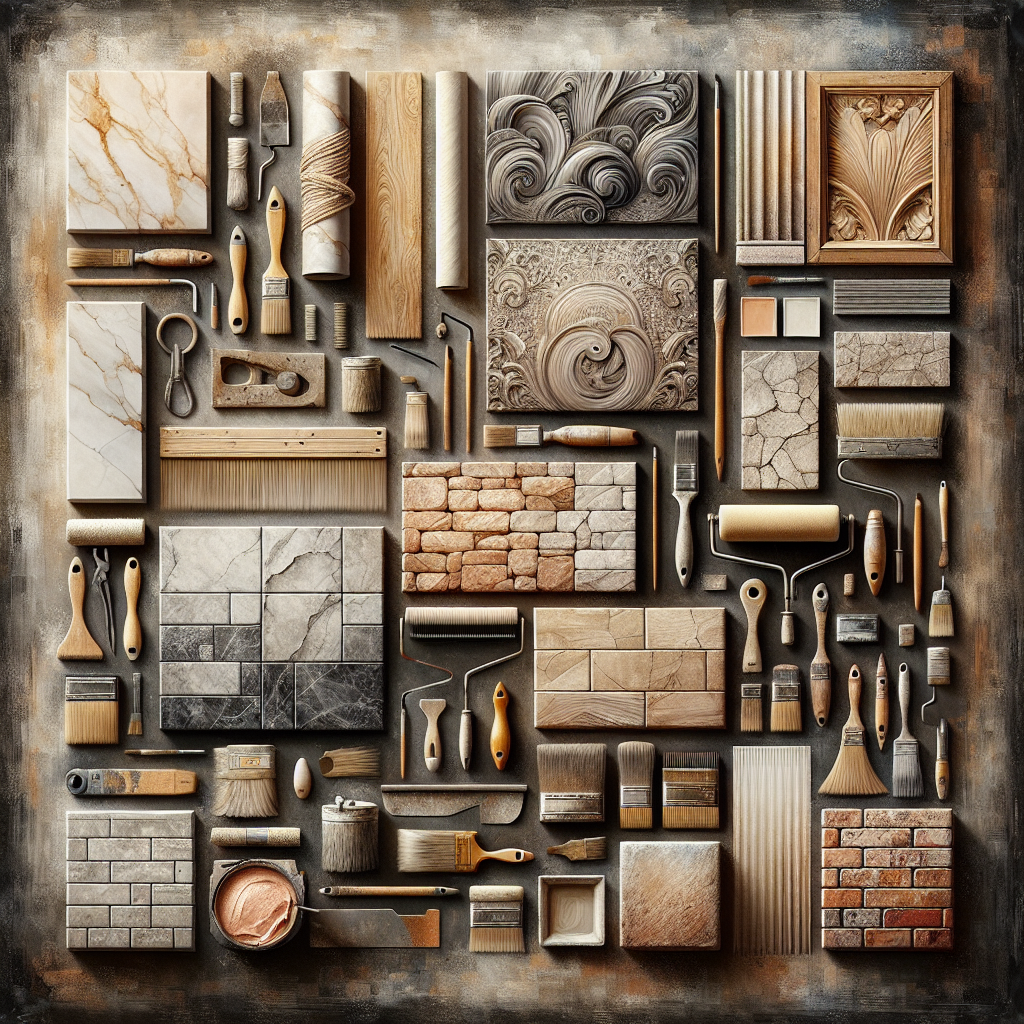
The Art of Faux Finishes: Techniques for Adding Depth and Texture to Walls
Are you tired of flat, uninspiring walls in your home? Feeling like your interior decor needs a bit of pizzazz? Fear not, for the art of faux finishes has arrived to transform your drab walls into stunning masterpieces! Faux finishes are a creative way to add depth and texture to your walls without the hefty price tag of expensive materials. Stick with us, and by the end of this article, you’ll be a savvy artist in the world of faux finishes.
What are Faux Finishes?
So, you’re probably wondering, what exactly are faux finishes? Faux, pronounced ‘foh,’ is the French word for ‘false.’ Essentially, faux finishes are painting techniques used to replicate the appearance of other materials like marble, wood, or stone. These artistic techniques can turn any plain wall into a textured, visually captivating piece of art.
Why Choose Faux Finishes?
The magic of faux finishes lies in their versatility and affordability. Here are a few reasons why you might want to consider faux finishes for your home:
- Cost-Effective: Achieve the look of high-end materials without the high price.
- Customizable: Tailor the finish to match your unique style and preferences.
- Easy Updates: Faux finishes can be easily updated or changed as trends evolve.
- DIY-Friendly: With a bit of practice and the right tools, anyone can master faux finish techniques.
Popular Faux Finish Techniques
Ready to dive into the world of faux finishes? Below are some of the most popular techniques to help you get started:
Sponging
Sponging is one of the easiest and most forgiving faux finish techniques. You’ll need a natural sea sponge and a couple of paint colors. Here’s how to do it:
- Base Coat: Apply a base coat and let it dry completely.
- Mix Paint: Mix a second paint color with glaze solution (usually one-part paint to four-parts glaze).
- Sponge Away: Dip the sponge into your glaze mixture and dab it onto the wall in a random pattern. Keep turning the sponge to vary the texture.
Rag Rolling
Rag rolling creates a soft, fabric-like texture perfect for adding a touch of elegance. Here’s how you can achieve this look:
- Apply Base Coat: Start with a dry base coat.
- Prep Glaze: Mix your topcoat color with glaze.
- Rolling Technique: Roll a rag into a cylinder, dip it into the glaze, and then roll the rag over the wall in a random pattern.
Color Washing
Color washing offers a dynamic, layered appearance and is versatile for various room styles. Here’s the process:
- Choose Colors: Select a base coat and a glaze color that complements your decor.
- Prep Surface: Apply your base coat and let it dry thoroughly.
- Apply Glaze: Use a brush to apply the glaze in a crisscross ‘X’ pattern, then soften the edges with a damp cloth.
Venetian Plaster
For a luxurious and sophisticated look, Venetian plaster is your go-to technique. Although it requires a bit more skill, the result is worth it. Here’s how to do it:
- Apply Plaster: Using a trowel, apply a thin layer of plaster with sweeping, random strokes.
- Second Layer: After it dries, add a second layer to build up a smooth surface.
- Burnishing: Once dry, burnish the plaster with a trowel or sandpaper to create a polished, marble-like finish.
Tools You’ll Need
Before diving into any of these techniques, it’s important to have the right tools on hand. Here’s a list of essentials:
- High-quality paintbrushes and rollers
- Natural sea sponges
- Rags or cheesecloth
- Paint glaze and mixing trays
- Trowels and sandpaper
Conclusion
Unleash your inner artist and give your walls the makeover they deserve with faux finishes. These techniques are not only fun to try but can completely transform your living space. Whether you choose sponging, rag rolling, color washing, or the luxurious Venetian plaster, your walls will no longer be just backdrops but captivating centerpiece of your home. Happy painting!
If you found these tips helpful, be sure to share this article with others and leave a comment below with your faux finish success stories!